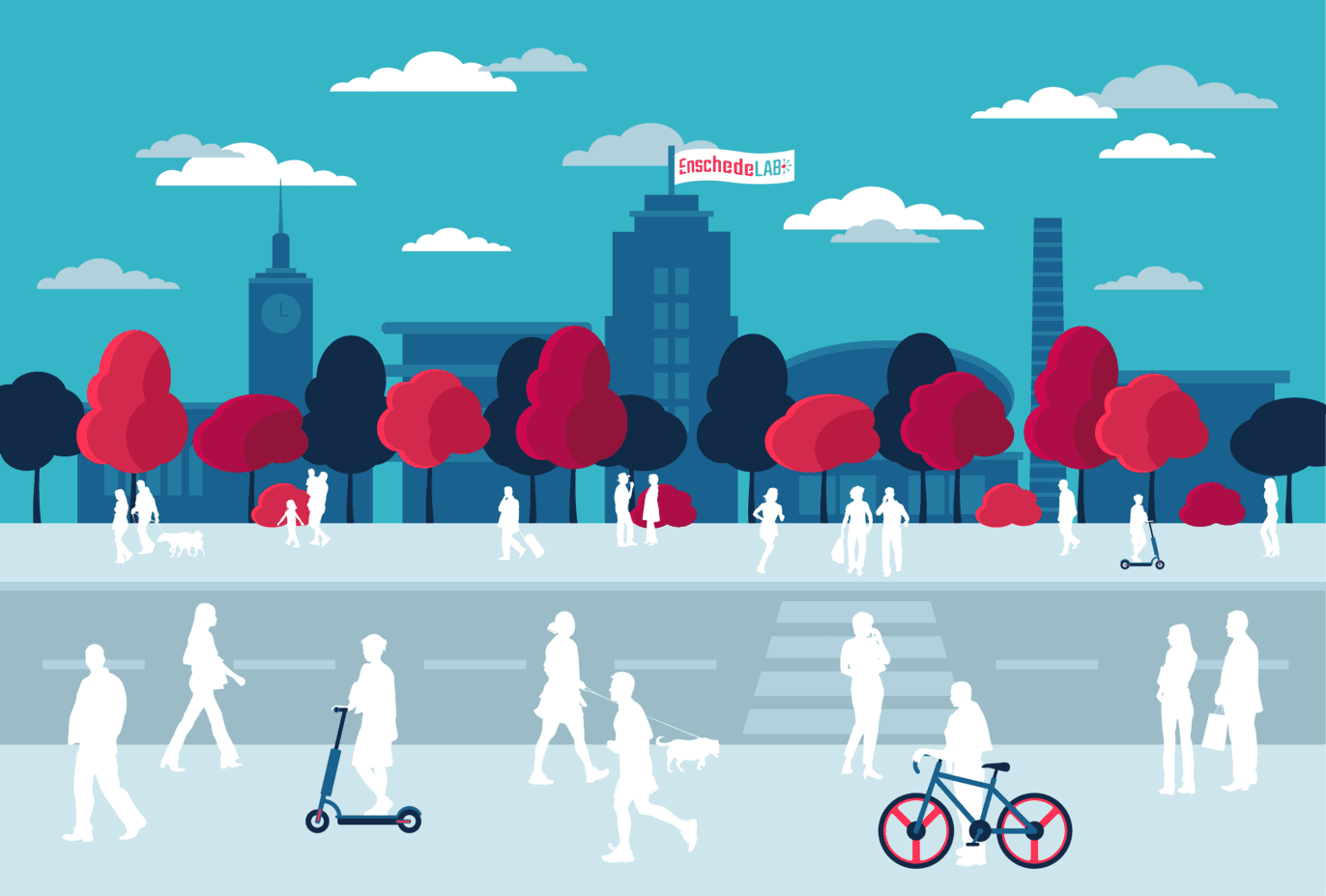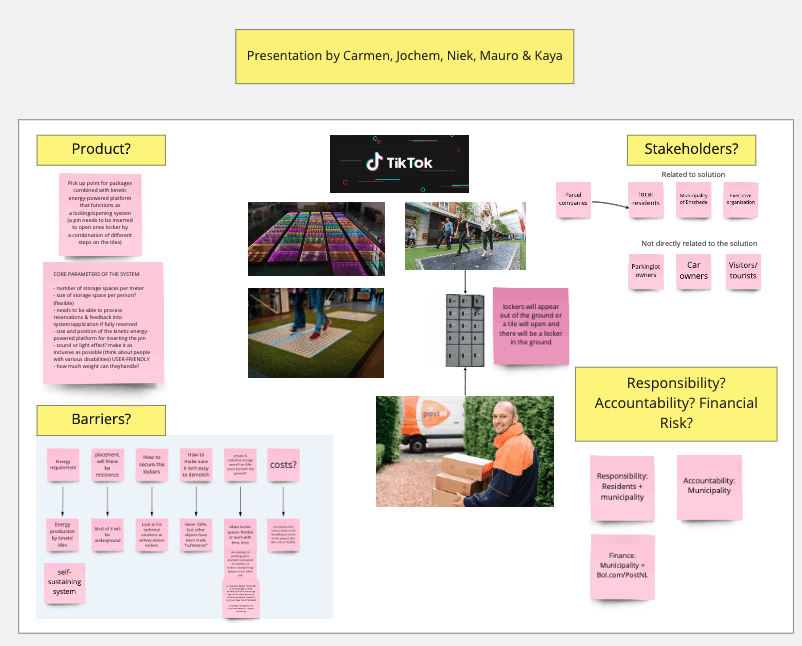Blik van de Weg
Rik Goossens, Gemeente Enschede
“Blik van de Weg”: De Gemeente Enschede wil de leefbaarheid in de stad verbeteren door de hoeveelheid parkeerplaatsen in de stad verkleinen. Zeker in de krappe en drukke binnenstraten in het centrum. In de overgangsperiode zijn er al een aantal tijdelijke oplossingen, zoals verwijderbare vlonderplanken, te plaatsen. De uitdaging is om nieuwe functies te vinden en die uit te werken. Voorbeelden zijn het voorzien van fietsenrekken, terrassen, speeltuinen of laadpalen, et cetera.

Gemeente Enschede, Rik Goossens
r.goossens@enschede.nl
Om de leefbaarheid van Enschede te vergroten wil de gemeente (straat)parkeerplaatsen binnen het centrum gaan opheffen. De openbare ruimte zou dan meer gebruikt kunnen worden voor groen, klimaatadaptatie of recreatie.
In de tussenliggende fase kunnen parkeerplaatsen niet meteen verwijderd worden, maar kunnen we deze wel tijdelijk anders gebruiken. De opdracht is om een flexibele tijdelijke (mobiliteits-)oplossing te bedenken, die van toepassing kan zijn op de ruimte van een parkeerplaats.
In nano-challenge 3 besteedden we daar aandacht aan, met enkele vervolgopdrachten als gevolg. Die staan onderaan deze pagina vermeld. Meer weten, of ermee aan de slag? Neem even contact op!
Kick-Off
Op donderdag, 18 februari, is de derde nano-challenge “Blik van de Weg” van start gegaan. Hieronder zie je de presentatie die Rik Goossens, van Gemeente Enschede, heeft gegeven over wat het doel van deze challenge is.
Resultaten
Op donderdag 18 maart mochten de zes gemengde teams hun resultaten presenteren aan de opdrachtgever, Rik Goossens van Gemeente Enschede. Bekijk hieronder de resultaten per team.
Team 1 stelde voor om lege parkeerplaatsen te vullen met een Experience Factory. Een interactieve en kleurrijke ervaring bieden aan de bezoekers van de binnenstad.
Team 2 kwam met het idee voor een online platform om inwoners van Enschede actief te betrekken bij het creatief invullen van parkeerplaatsen in hun buurt.
Team 3 stelt voor om, door middel van co-creation, de lege parkeerplaatsen in de stad op een creatieve manier gevuld worden. Zo worden buurtbewoners betrokken bij de openbare ruimtes in hun buurt.
Team 4 bedacht een creatieve oplossing voor de alsmaar toenemende pakketbezorgingen, door pakket en post punten te plaatsen op lege parkeerplaatsen. In overleg met de gemeente en de bewoners van de buurten wordt bepaald waar de pakketpunten geplaatst worden en hoe ze eruit komen te zien.
Team 5 zet zich in voor duurzame en groene invullingen van de parkeerplaatsen. Door lokale ondernemers, buurtbewoners en de gemeente te koppelen worden de lege ruimtes gevuld, vooral aan de Kuipersdijk.
Team 6 bedacht ook een innovatief pakketpunt, verhuld als kleurijke en interactieve stoeptegels. Door middel van kinetische energie, opgewekt door voetgangers, wordt het platform voorzien van energie.

Vervolg
De oplossingsrichtingen waar de verschillende teams mee kwamen waren aanvullend op ideeen die bij de gemeente zelf al leefden. Die gedachten richten zich vooral op mobiliteitsoplossingen. Van de aangereikte suggesties zijn er twee waar we graag een vervolg aan zouden willen geven:
De ene oplossing is die van team 1: hoe kunnen we parkeerplaatsen gebruiken als ‘openlucht-museum’? De oplossing van team 6 (overeenkomstig die van team 4) verdient ook opvolging: hoe kunnen we een opvallende en aansprekende manier vinden om parkeerplaatsen te gebruiken als plek voor pakketjesdistributie?
Wil je met één van die twee thema’s aan de slag, of ben je een docent die er aandacht aan wil geven binnen een onderwijsproject? Neem dan vooral even contact op, zodat we kunnen afspreken hoe je aan dit vraagstuk kunt bijdragen.
MAAK DEEL UIT
VAN HET ENSCHEDELAB
